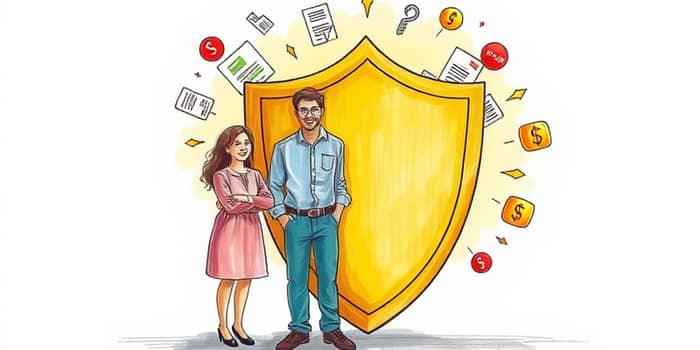
Financial emergencies can strike without warning, leaving individuals, households, and organizations scrambling to respond. Whether triggered by natural disasters, job losses, or cyberattacks, these crises demand a clear blueprint for action. This guide provides a comprehensive roadmap to building resilience, minimizing losses, and recovering swiftly from any financial shock.
A financial emergency is defined as any sudden event that threatens the economic well-being of a person or entity. Examples include job termination, unexpected medical bills, natural catastrophes, and operational shutdowns caused by cyberattacks.
Having a dedicated crisis management plan is essential. A well-structured response allows you to act methodical and minimize financial damage, ensuring continuity and stability.
A robust plan consists of several interconnected elements designed to guide decision-making under stress. Each component must be tailored to the scale and nature of potential emergencies.
Individuals and families can strengthen their financial safety nets by focusing on savings, budgeting, insurance, and documentation.
Emergency savings provide the first line of defense. Aim for three to six months’ worth of living expenses, but even contributing $5–$10 each week builds momentum over time.
Effective budgeting helps you track dollars in and out, revealing opportunities to cut discretionary spending and redirect funds into your emergency fund. Simultaneously, practicing disciplined debt management—paying at least minimum dues without skipping payments—preserves your credit score and reduces refinancing costs.
Insurance policies must be reviewed annually. Health, homeowners, renters, and flood coverage all have gaps and waiting periods; flood insurance typically requires a 30-day activation window.
Creating a secure archive of critical paperwork safeguards your ability to recover quickly:
Maintain copies in waterproof, fireproof safes and encrypted cloud storage to ensure access even if one system fails.
For businesses and nonprofits, planning must address broader operational complexities. Start with a dedicated disaster financial management strategy.
This includes maintaining a reserve fund sized to cover at least one to three months of core expenses. Secure insurance policies that cover property damage, business interruption, and cyber liability. Negotiate standby contracts with vendors for emergency supplies or services at predetermined rates.
Real-time expense tracking during and after a crisis is critical for accurate reimbursement and insurance claims. Leverage accounting platforms that tag disaster-related costs distinctly from routine expenditures.
Federal, state, and local agencies offer valuable tools and funding options to support recovery efforts. Key resources include FEMA, Ready.gov, and the U.S. Small Business Administration (SBA).
Available financial assistance options include:
Understanding loan types can save time during critical moments. Below is a quick reference table:
Transparent, timely communication fosters trust and prevents misinformation. Appoint a spokesperson, develop template messages for internal and external audiences, and monitor media channels for public sentiment.
Regular training and drills ensure everyone understands their role and can execute the plan under pressure. Conduct tabletop exercises annually and update protocols based on lessons learned.
Photograph and catalog inventories of household and business assets. Secure petty cash reserves to access funds during ATM outages or when digital systems are down. Consider pre-arranged lines of credit with banks for rapid liquidity.
Effective crisis management is dynamic. Schedule annual reviews of your plans and after any significant incident. Update risk assessments, contact lists, insurance policies, and training materials to reflect evolving threats.
Adopting an all-hazards approach to planning and choosing to modularize your action plans will keep your strategy relevant and robust. By committing to continuous improvement, you transform uncertainty into opportunity and safeguard your financial future.
References













